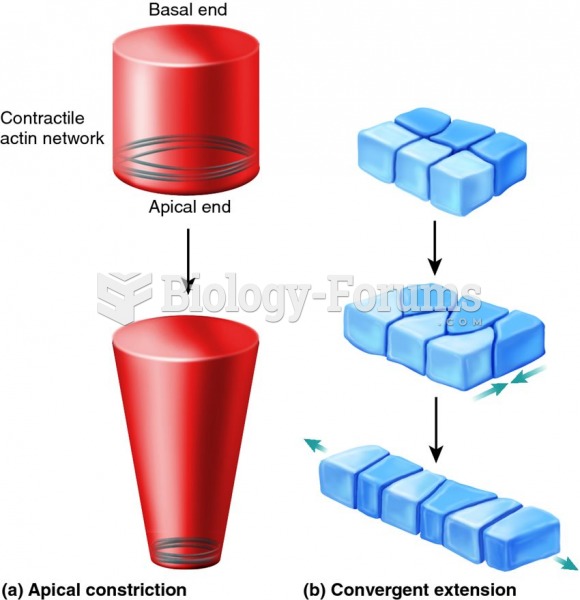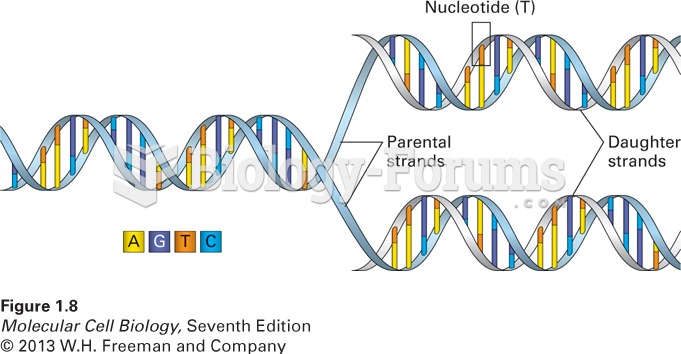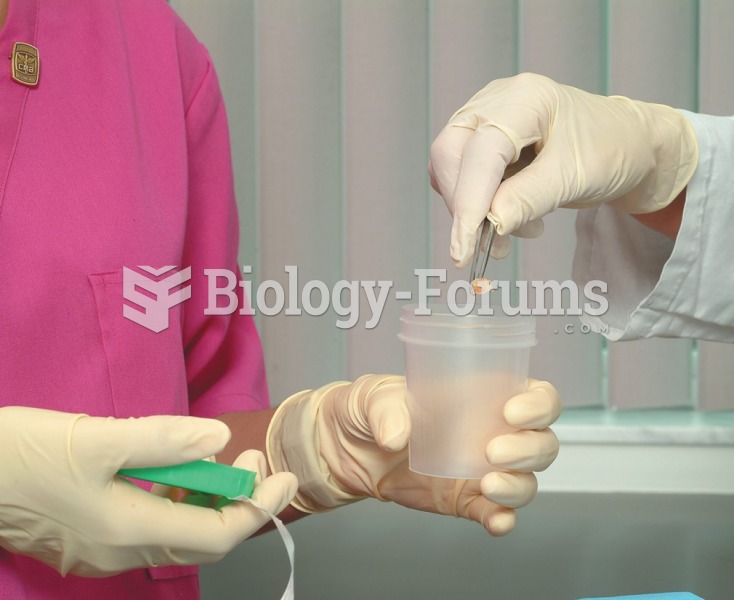|
|
|
The FDA recognizes 118 routes of administration.
Of the estimated 2 million heroin users in the United States, 600,000–800,000 are considered hardcore addicts. Heroin addiction is considered to be one of the hardest addictions to recover from.
Everyone has one nostril that is larger than the other.
The Centers for Disease Control and Prevention has released reports detailing the deaths of infants (younger than 1 year of age) who died after being given cold and cough medications. This underscores the importance of educating parents that children younger than 2 years of age should never be given over-the-counter cold and cough medications without consulting their physicians.
Between 1999 and 2012, American adults with high total cholesterol decreased from 18.3% to 12.9%







